Lawrence Ferlinghetti’s identity was well known to me — as a world-renowned poet, supporter of the Beats, member of the San Francisco Renaissance, owner of City Lights Bookstore and unwavering activist. But somehow his six decades of painting completely eluded me.
Lawrence Ferlinghetti’s Lesser-Known Identity as a Painter on Display at Triton Museum
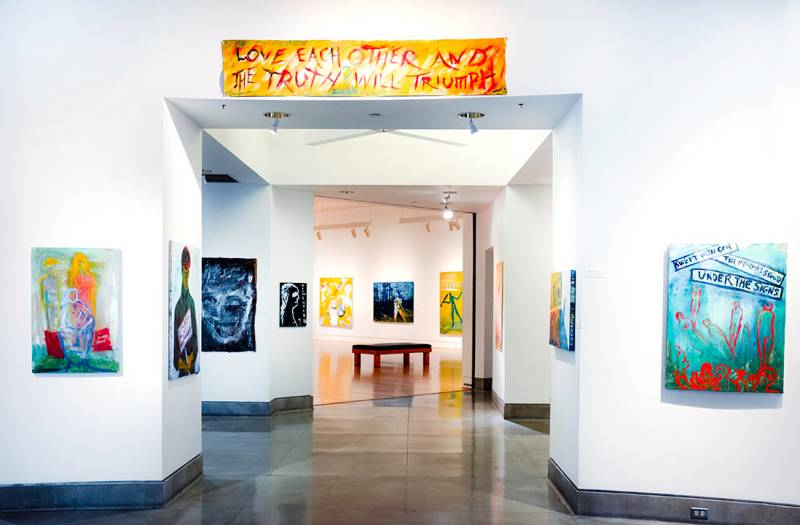
Painter, Poet & Pacifist at Santa Clara’s Triton Museum of Art is the first exhibition of Ferlinghetti’s artwork since his death in February 2021 at the age of 101. Knowledge of his many occupational titles, literary output, catalytic roles, challenges to the status quo and prestigious awards are a helpful primer. But that background isn’t totally necessary to view his art and witness his prevailing concerns for our humanity.
The exhibit encapsulates Ferlinghetti’s determination to empower others by yet another creative means, one that he pursued just as long as his better-known endeavors. In fact, he began painting in 1948 while studying at the Sorbonne, while he didn’t co-found City Lights until 1953.
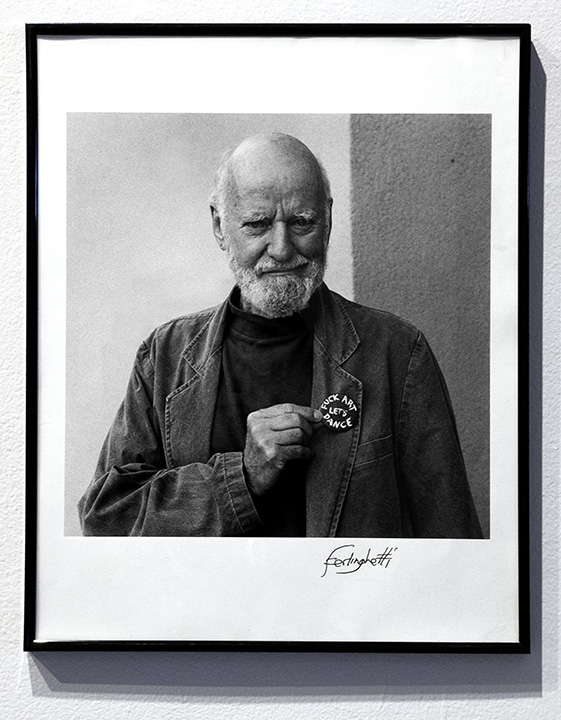
As I step into the museum, Ferlinghetti greets me with warmth and good humor in a series of original black-and-white portraits by Christopher Felver. The 15 portraits, which span several decades, are mostly culled from Felver’s book Ferlinghetti Portrait (1998). As an owner of one of Ferlinghetti’s “Fuck Art Let’s Dance” buttons, I feel immediately pulled into Ferlinghetti’s inner circle when I see a photo of him wearing one with a furrowed brow and a slight smile.
Even before the exhibition begins, small Ferlinghetti paintings hanging in the museum’s lobby offer an introduction to his style of broad brushstrokes and text-based works. Washes of muddled colors, simply drawn faces and figures devoid of detail are accompanied by words that resemble poeticized vandalism. These works have all the qualities of the best street art — imagery entwined with slogans to get you to feel something — to do something! I can picture Art/Love: A Leisure Class Activity well suited to an alley in the Financial District.
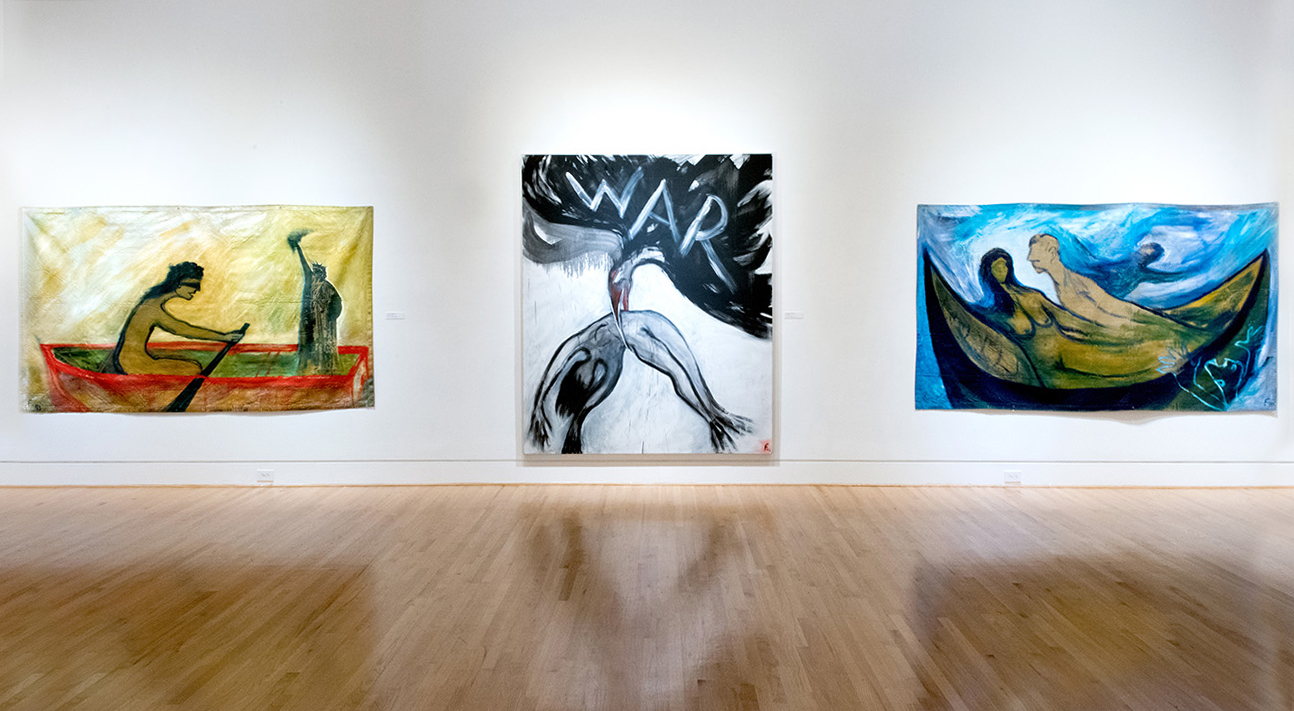
One of the most surprising elements of Ferlinghetti’s artwork is its scale. WAR (1993), an eight-foot-tall oil painting, is the unequivocal focal point of the main gallery. Giant vulture wings in a downward trajectory span the top third of the painting; the bird holds a limp ash-gray torso in its blood-spattered beak.
WAR is flanked on both sides by imagery of boats at sea on large tarpaulins. A quick survey around the room reveals quite a few watery scenes. The most provocative is Boat People (2006), which depicts seven people — one ghostly — in turbulent waters filled with incorporeal beings. A blindfold, gag and a wisp of a tattered sail are all painted bright red. There is no sense of direction and no land in sight, as if to say: those who do not see and those who do not speak are bound to drift aimlessly, surrounded by phantoms.
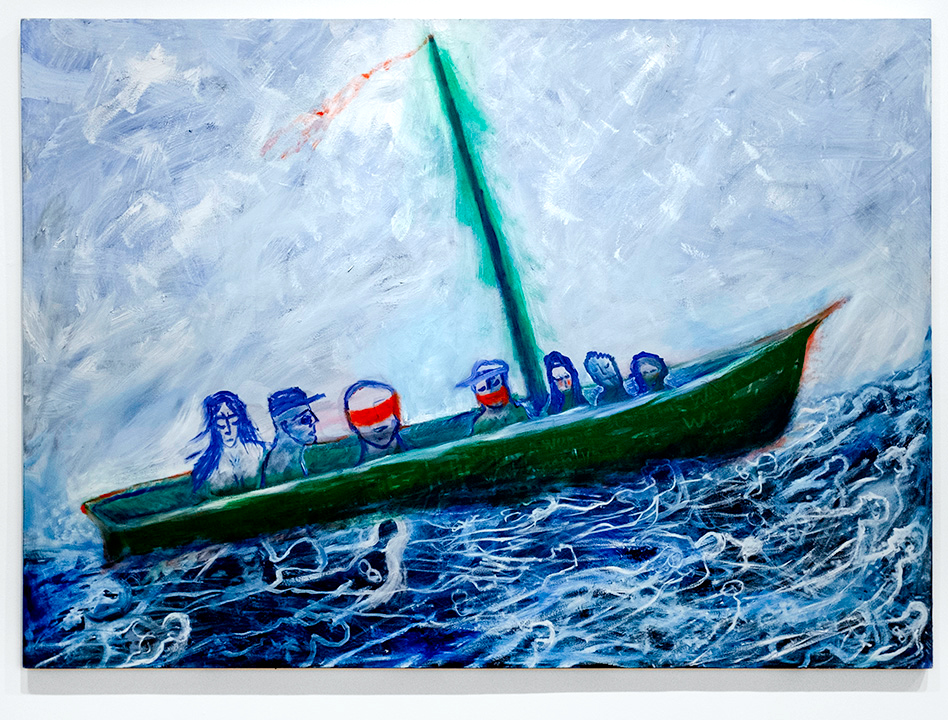
John Mathias, a board member of the Triton Museum and the exhibition’s curator, says the recurring nautical motif might be tied to Ferlinghetti’s days in the Navy. Ferlinghetti was a sailor during WWII and commander of his own submarine chaser in the D-Day landing on the coast of Normandy in 1944. Ferlinghetti was also a great admirer of J. M. W. Turner’s work. The English Romantic-era painter created epic maritime scenes through dramatic use of color and light, especially in his skies. With this point of reference, Ferlinghetti’s “muddled” backgrounds can interpreted as “Turner inspired.” In Ferlinghetti’s work, light often comes from a source unknown, somewhere above and beyond the canvas.
The boat paintings stir feelings of being adrift. Usually rendered alone on the water, they have no oars or sails to catch the wind. Even where boats aren’t present, many of Ferlinghetti’s paintings have a feeling of isolation and inner solitude about them. Mathias points to Ferlinghetti’s childhood, during which he was essentially orphaned twice. His father died before he was born and his mother was committed to a mental hospital shortly after his birth. Later, the aunt he knew as his mother abandoned him at age seven with her well-to-do employers. Ferlinghetti said his childhood was “right out of Dickens.”
Despite his long life and incredible experiences, Ferlinghetti’s paintings contain no nostalgia. In dystopian settings and situations, he rendered the resilience of the human spirit. “Instead of trying to escape reality, plunge into the flesh of the world” is a line from Poetry as Insurgent Art, a mantra he’s effectively put to use and carried over into his paintings.
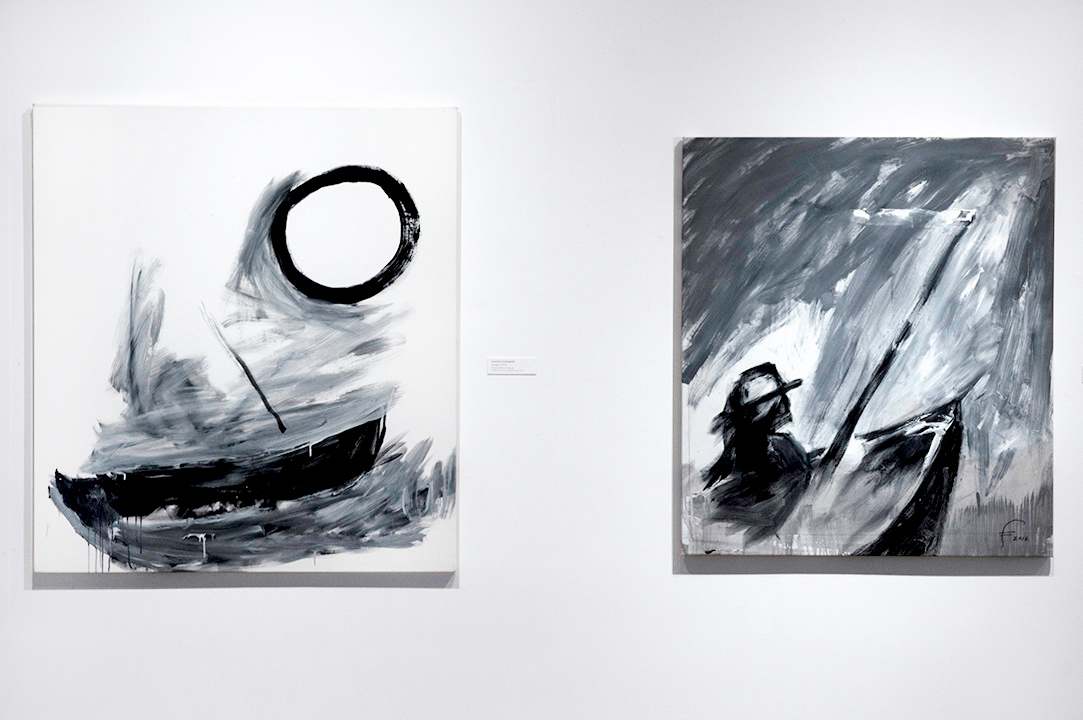
I ask Mathias if Ferlinghetti’s final paintings are in the exhibit. He points to Voyage to the Unknown (Voyage I) (2015) and Voyage II (2016). By that time, Ferlinghetti’s eyesight had deteriorated due to glaucoma and painting in black and white was easier for him. In Voyage II, the moon is replaced by the enso, the individualized and slightly imperfect Zen circle that symbolizes the cyclical nature of life and the continuity of energy. Whether intended or not as his final paintings, the pair makes it possible to imagine it is Ferlinghetti in that boat navigating an eternal sea, embarking on the next unknown voyage.

‘Painter, Poet, & Pacifist’ is on view at the Triton Museum of Art in Santa Clara through Dec. 30. Details here.
This report contains a correction.
At the bottom of the post, a brief description of the correction should be added in italicized text. The description should reference the original error, what has been done to correct it, and the date that the post was corrected.
Correction Nov. 29: An earlier version of this story referred to John Mathias as a member of the Ferlinghetti Trust and not as the curator of the exhibition.

